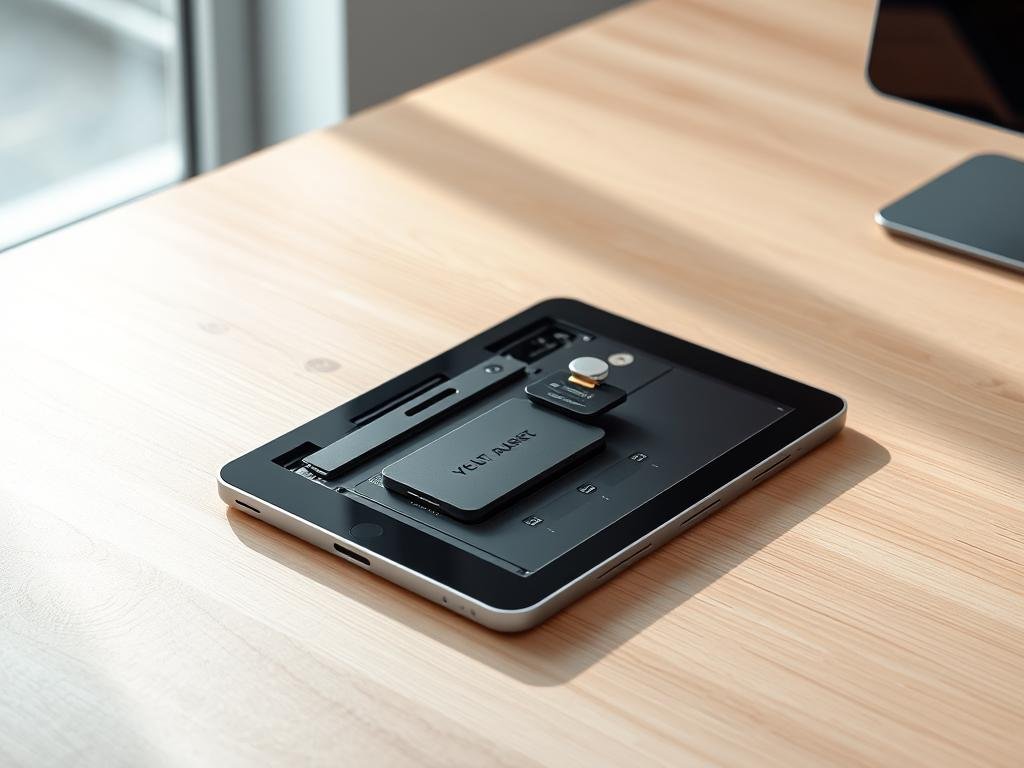“The measure of intelligence is the ability to change,” said Albert Einstein. When your gadget starts flashing “insufficient space” warnings, it’s time for a smart solution—not a new purchase.
Modern devices often come with limited built-in capacity, usually between 8GB and 128GB. High-resolution photos, apps, and media files fill it up fast. But replacing your gadget isn’t the only answer.
Affordable fixes like microSD cards, cloud backups, or USB drives can breathe new life into your device. Android users have extra flexibility, but even iOS fans can optimize their setup.
This guide walks you through simple, cost-effective ways to reclaim space—so you keep what matters without the hassle.
Assess Your Tablet’s Current Storage Needs
Before expanding your device’s capacity, it’s smart to analyze what’s eating up space. A quick audit helps you decide whether to delete, move, or add more room.
Check Available Internal Storage
Start by diving into your settings. On most Android tablets, go to Settings > Storage to see a breakdown of your internal storage. This shows how much space apps, photos, and system files occupy.
Look for:
- Large apps (games often take 2GB+)
- “Other” categories hiding cached data
- Duplicate media files
Streaming apps like Netflix or Spotify secretly store offline content. Clear their cache regularly to free up space.
Identify Space-Hogging Apps and Files
Your device likely has built-in tools to sort files by size. Use them to spot 4K videos or unused apps. Google Photos’ “Free Up Space” feature removes backed-up photos from your device safely.
“Regular cleanup prevents 90% of storage crises.”
Follow this monthly checklist:
- Delete apps you haven’t used in 3 months
- Clear app caches (especially social media)
- Transfer large files to cloud storage
Avoid factory resets unless absolutely necessary. For more tips on optimizing older devices, check this guide on reviving aging tech.
Expand Storage with a MicroSD Card
Running out of space doesn’t mean you need a new device. A microSD card offers an easy, budget-friendly way to boost your gadget’s capacity. These tiny cards can hold everything from photos to apps, giving you instant relief.
Choosing the Right MicroSD Card for Your Tablet
Not all cards are created equal. Pick the wrong one, and you’ll face slow speeds or compatibility issues. Here’s what to look for:
- Capacity: Cards range from 32GB to 2TB. NOOK tablets support up to 256GB.
- Speed Class: UHS-I handles basic files, while UHS-II is better for 4K video.
- Type: MicroSDXC cards (32GB–2TB) work best for high-res media.
| Type | Capacity | Best For |
|---|---|---|
| MicroSD | Up to 2GB | Basic files |
| MicroSDHC | Up to 32GB | Photos, apps |
| MicroSDXC | 32GB–2TB | 4K video, large apps |
How to Insert and Configure a MicroSD Card
Adding a card takes seconds. Locate the card slot—usually near the SIM tray. Align the card’s notch with the slot, then gently push until it clicks.
- Go to Settings > Storage & USB.
- Select your card, then tap Format as portable or Format as internal.
- Follow prompts to set default write disk preferences.
“Encrypting your card protects data if it’s lost or stolen.”
Portable vs. Internal Storage: Which to Choose?
Portable storage lets you remove the card freely—ideal for photos and videos. Internal storage merges the card with your device, allowing app installations but locking data to that gadget.
Formatting a MicroSD Card for Internal Storage
Some Android devices let you treat the card as built-in space. Tools like AOMEI Partition Assistant help format cards to EXT2/EXT3 for compatibility.
Warning: DRM-protected eBooks or apps might not transfer to the card. Always back up first.
Alternative Storage Expansion Options
When a microSD card isn’t enough, these clever alternatives can save your files. Whether you need extra space for work or media, these solutions adapt to your needs without replacing your device.
Using Low-Profile USB Flash Drives
Compact USB drives like the SanDisk Ultra Fit (64GB for ~$15) slide into your gadget’s port without sticking out. Perfect for on-the-go access, they’re faster than cloud syncing for large files.
Choose wisely:
- USB 3.0 (5Gbps) for 4K videos or photo editing
- USB 2.0 (480Mbps) for documents and backups
Encrypted options like the Kingston DataTraveler Vault protect sensitive data with hardware encryption.
Leveraging Cloud Storage Solutions
Services like OneDrive ($7/month for 1TB) or Google Drive ($10/month) automate backups. Set apps like Google Photos to “Free Up Space” after uploading.
For security, enable two-factor authentication (2FA) and client-side encryption. Hybrid setups work best—store RAW photos on a USB drive but back them up to the cloud.
Managing Files Across Multiple Storage Options
Tools like Solid Explorer help organize files across drives, cards, and cloud accounts. Create rules to auto-sync downloads to cloud storage while keeping work files local.
For tech-savvy users, an SSD upgrade offers a 30% speed boost. Otherwise, stick with portable drives and cloud tiers for flexibility.
Conclusion
Finding the right solution for your device depends on your needs and budget. A microSD card offers the best value for quick expansion, while cloud services provide flexibility for backups. Heavy users might consider faster options like SSDs.
Match your choice to how you use your gadget. Gamers need high-speed cards, while casual users can opt for affordable cloud plans. Regular audits keep your storage space under control and extend your device’s life.
Follow these steps for success:
- Review your current usage
- Pick a method that fits your habits
- Use tools like AOMEI for seamless setup
With the right approach, you’ll never see that dreaded “full” warning again. Start optimizing today!
